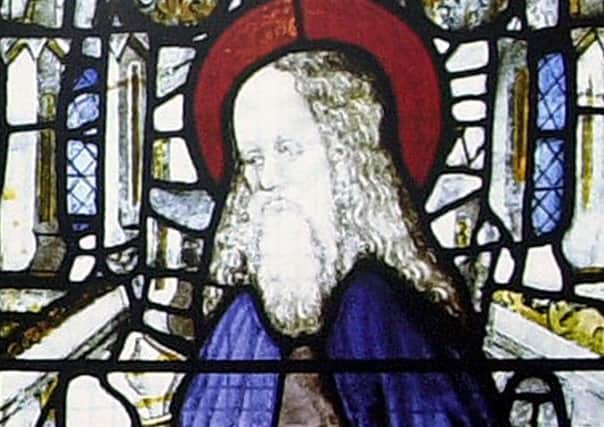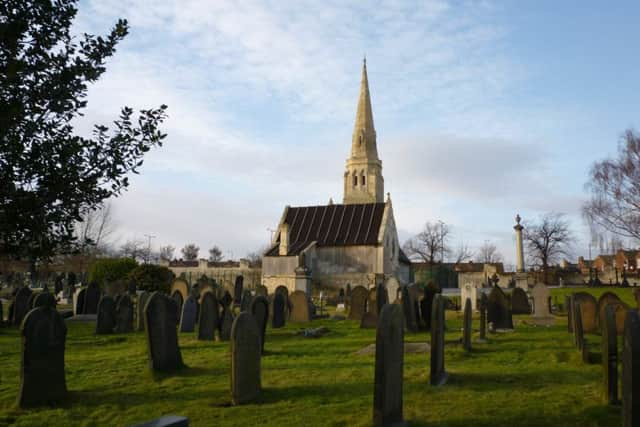Heritage Open Days reveal Doncaster's history


Established in 1994, Heritage Open Days is England’s contribution to the European Heritage Days and has since grown into the country’s largest heritage festival.
Expanding and diversifying from 701 events at its launch to more than 5,000 today, Heritage Open Days continues to flourish with more events every year, reflecting the rich and diverse cultural offering of England and its communities.


Advertisement
Hide AdAdvertisement
Hide AdOne of the jewels in Doncaster’s heritage crown and one which can be viewed on September 9, noon to 4pm and on September 10, 11am to 3pm, is Barnburgh Dovecote, at Barnburgh Hall Gardens.
This is a Grade II scheduled monument and was built for the residents of Barnburgh Hall in the late 16th or early 17th century. It is estimated that it might have housed up to 2,000 birds in its heyday. The National Coal Board had Barnburgh Hall demolished in 1969 – claiming that it was suffering from mining subsidence. However the dovecote, stable block and gardener’s cottage survived and the dovecote is now cared for by the residents of the new development built on the site of the old hall. It is only open to visitors for one weekend a year and provides an opportunity to see a fine example of an original octagonal limestone dovecote which is exceptionally well preserved.
This is a unique opportunity to see a fine example of an original octagonal limestone dovecote. Entrance to the dovecote is free and everyone is welcome. The dovecote was once home to the family of Thomas More, Chancellor during the reign of Henry VIII and was a wedding gift from Thomas More when his son John More married Anne Cresacre.
Another piece of Doncaster history will also be involved in the Heritage Open Days with a Hyde Park Cemetery Guided Walk - ‘Planes, Trains & Automobiles’, at the cemetery in Carr Lane.


Advertisement
Hide AdAdvertisement
Hide AdThe Guided Walk is led by the Friends of Hyde Park Cemetery. Doncaster is well known for its railway heritage, but air travel is also a significant part of the town’s past. It is not widely known that cars were built here, too. This guided walk will visit the graves and tell the stories of people whose lives (or deaths) were associated with these three modes of transport.
It starts at 3pm, covers a distance of approximately one mile and no booking is required.
Cusworth Hall Museum at Cusworth Lane in Cusworth is another grand old building involved in the scheme with its renewal and renovation project revealed to the public on September 10 between 11am and 3pm, again with no booking required.
Cusworth Hall is a fine example of a fashionable Georgian country house built by local landowner and lawyer William Wrightson. The house was significantly altered by renowned architect James Paine between 1749 and 1753. This year marks 300 years since the birth of James Paine in 1717, so our theme will be the renewal and renovation at Cusworth Hall since Paine’s additions through to the last major works on the building in 1907. What interesting gossip did James Paine report to William Wrightson from London? When was electricity added to the Hall? And to what unintended use was the new lift put to in the twentieth century? All these questions and more will be answered on our friendly and informal guided tours.


Advertisement
Hide AdAdvertisement
Hide AdThe day will also include tours of the Walled Gardens with the Hall’s acting head gardener.
Throughout the Open days from September 7 to 10, extra information on the history and heritage of Doncaster Minster will be on display.
Times are on September 7, 10am to 4pm; September 8, 10am to 4pm, tour at 2pm; September 9, 10am to 4pm, tour, 11.30am and 2pm; September 10, noon to 4pm – no booking required.
The Minster church of St George Doncaster lies at the heart of the town where a church has stood for more than eight centuries. It is a Grade I listed building designed by Sir Gilbert Scott, completed in 1858 after the medieval church had been destroyed by fire. It is a magnificent example of Victorian design.


Advertisement
Hide AdAdvertisement
Hide AdThe Minster sits on the site of the Roman fort of Danum and some of the original wall of the fort can still be viewed in the Minster grounds.
An exhibition of local history photographs showing how life in the community has changed over the last 100 years will be on display at St Oswald’s Church, Kirk Sandall, Doncaster on September 9 and 10, 11am to 4pm on both days – again no booking required.
This church is now in the care of The Churches Conservation Trust. Mainly Norman with a later Tudor Chantry Chapel (Rokeby Chapel). The old village mentioned in the Doomesday Book was demolished when the adjacent Pilkington’s Glassworks built their factory complex and replacement village for their workforce leaving the church standing in isolation. There will be an exhibition of local history photographs showing how life in the community has changed over the last 100 years.